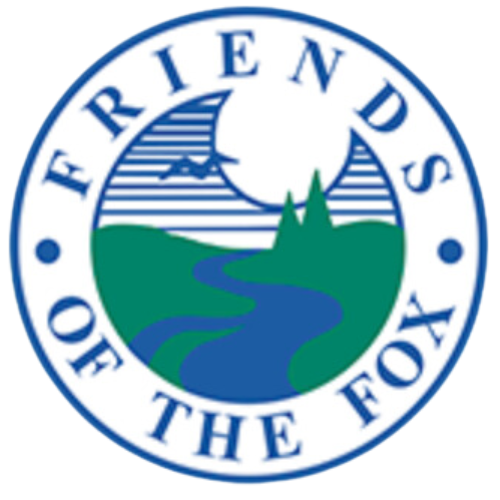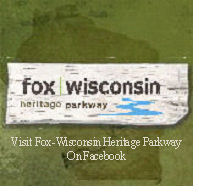
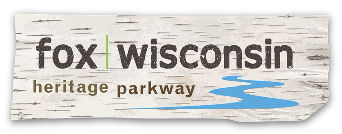
Fox-Wisconsin Heritage Parkway started as a community project of Friends of the Fox as a collaborative effort by the Friends of the Fox and the East Central Wisconsin Regional Planning Commission to protect and enhance the abundant resources and unique history of the Fox and Lower Wisconsin Rivers.
Since that time the Parkway has grown to the point that it is now began a non-profit organization of its own and is no longer under the umbrella of Friends of the Fox. Friends of the Fox wishes the Parkway all of the best in its future endeavors and are pleased to have been an instrumental part of the birth of Fox-Wisconsin Heritage Parkway’s organization!
What is a National Heritage Area?
(Watch YouTube Video On Explanation of National Heritage Area.)
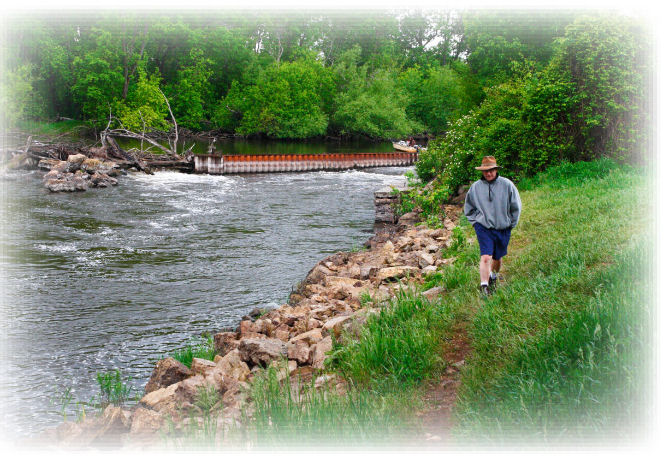
Make a Matching Donation to the Fox-Wisconsin Heritage Parkway
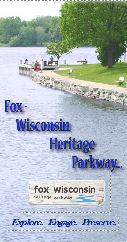
FWHP National Heritage Area Legislation Introduced to Congress!
SENATOR KOHL & CONGRESSMAN PETRI INTRODUCE LEGISLATION TO DESIGNATE THE FOX-WISCONSIN HERITAGE PARKWAY AS A NATIONAL HERITAGE AREA
Legislation includes 15 counties throughout Wisconsin in proposed National Heritage Area
WASHINGTON, March 6, 2012 – Today, Senator Herb Kohl and Congressman Tom Petri introduced legislation to establish the Fox-Wisconsin Heritage Parkway as a National Heritage Area. The proposed Fox-Wisconsin Heritage Parkway runs through parts of 15 counties throughout Wisconsin and marks the path of Father Jacques Marquette and Louis Joliet’s exploration through Wisconsin to the Mississippi River.
“We are fortunate that Wisconsin is home to this rich portion of our country’s history,” Kohl said. “The new designation of the Fox-Wisconsin Heritage Parkway will work to preserve the history of the area and educate residents and visitors alike of the influence of Father Marquette and Louis Joliet on the Wisconsin landscape.”
Petri commented, “Establishing this heritage area will highlight our region’s unique contributions to America’s national story. In doing so we will draw Americans from across the country who wish to learn more about our state’s unique history, culture and heritage, and will enhance the quality of life for Wisconsin’s residents.”
The National Park Service defines National Heritage Areas as:
“…places where natural, cultural, historic and scenic resources combine to form a cohesive, nationally important landscape arising from patterns of human activity shaped by geography. These patterns make National Heritage Areas representatives of the American experience through the physical features that remain and the traditions that have evolved in them. These regions are acknowledged by Congress for their capacity to tell important stories about our nation. Continued use of National Heritage Areas by people whose traditions helped to shape the landscape enhances their significance.”
The National Heritage Area (NHA) concept was created in 1984, with the goal of preserving our national history and resources, and telling a unique story about American history. There are currently 49 NHAs, though none are located in Wisconsin. Unlike a National Park, a NHA is not managed by the National Park Service, and no land exchanges are made. Instead, the NHA designation serves as a structure for residents, non-profit organizations and businesses to work together on education and conservation of the historic resources of the area.
The proposed Fox-Wisconsin Heritage Parkway NHA includes approximately 1,400 square miles of land in 15 counties in central and southeastern Wisconsin, including Brown, Calumet, Columbia, Crawford, Dane, Fond du Lac, Grant, Green Lake, Iowa, Marquette, Outagamie, Richland, Sauk, Waushara, and Winnebago counties. This area was chosen to tell the story of Father Jacques Marquette and Louis Joliet and their voyage in 1673 from the Great Lakes down the Mississippi River, the results of which helped establish European settlements in the Mississippi River Corridor.
National Heritage Areas can only be designated through an act of Congress; accordingly, like other acts of Congress, the bill introduced today must pass the House and Senate and be signed by the President.
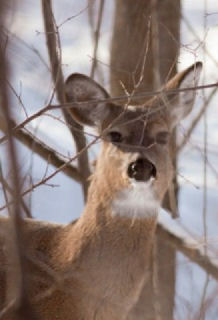
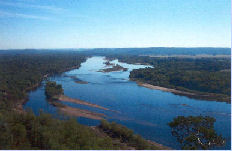
Heritage Parkway CELEBRATES!
August 2, 2010 – The proposed Fox-Wisconsin Heritage Parkway (FWHP) took a major step forward last week when two Wisconsin lawmakers, Senator Herb Kohl and Representative Steve Kagen introduced legislation to designate the FWHP as a National Heritage Area.
Legislation includes 15 counties throughout Wisconsin in proposed National Heritage Area
WASHINGTON, July 30, Senator Herb Kohl and Congressman Steve Kagen introduced legislation to establish the Fox-Wisconsin Heritage Parkway (FWHP) as a National Heritage Area. The proposed FWHP runs through parts of 15 counties throughout Wisconsin and marks the path of Father Jacques Marquette and Louis Joliet’s exploration through Wisconsin to the Mississippi River.
“The Fox-Wisconsin Heritage Parkway highlights a key portion of Wisconsin history that needs to be preserved for future generations. The development of the Mississippi and the West was due in part to the work of Marquette and Joliet, and it would be a shame for this piece of history to be lost as the years go on,” Kohl said.
“As Aldo Leopold taught us, there is no separation between Mankind and our natural environment, and it is therefore our duty to preserve the environment we enjoy today for future generations. The FWHP is not just an important piece of the Wisconsin landscape, but a key part of American history, and protecting this route of exploration in its natural form is essential,” Kagen said.
The National Park Service defines a National Heritage Areas as:
“places where natural, cultural, historic and scenic resources combine to form a cohesive, nationally important landscape arising from patterns of human activity shaped by geography. These patterns make National Heritage Areas representatives of the American experience through the physical features that remain and the traditions that have evolved in them. These regions are acknowledged by Congress for their capacity to tell important stories about our nation. Continued use of National Heritage Areas by people whose traditions helped to shape the landscape enhances their significance.”
The National Heritage Area (NHA) concept was created in 1984, with the goal of preserving our national history and resources, and telling a unique story about American history. There are currently 49 NHAs, though none are located in Wisconsin. Unlike a National Park, a NHA is not managed by the National Park Service, and no land exchanges are made. Instead, the NHA designation serves as a structure for residents, non-profit organizations and businesses to work together on education and conservation of the historic resources of the area.
The proposed F-W Heritage Parkway NHA includes approximately 1,400 square miles of land in 15 counties in central and southeastern Wisconsin, including Brown, Calumet, Columbia, Crawford, Dane, Fond du Lac, Grant, Green Lake, Iowa, Marquette, Outagamie, Richland, Sauk, Waushara, and Winnebago counties. This area was chosen to tell the story of Father Jacques Marquette and Louis Joliet and their voyage in 1673 from the Great Lakes down the Mississippi River, the results of which helped establish European settlements in the Mississippi River Corridor.
National Heritage Areas can only be designated through an act of Congress; accordingly, like other acts of Congress, the bill introduced today must pass the House and Senate and be signed by President Obama.
Heritage Areas Congressional Caucus Created
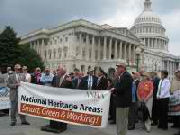
Members of Congress and partners from across the country joined to rally support for national heritage areas at a press conference at the U.S. Capitol on June 15, 2010.
At the press conference, U.S. Reps. Charles Dent (R-PA) and Paul Tonko (D-NY) announced the creation of a National Heritage Areas Caucus in the U.S. House of Representatives that will pursue legislation to formally create a National Heritage Areas Program within the Park Service.
Legislation authorizing a National Heritage Areas Program would improve the establishment of new areas by creating criteria and standards for qualification as a heritage area, and ensuring that they meet management guidelines. The legislation would also foster a permanent base funding stream for the program.
Caucus members include:
Paul D. Tonko, NY, Charlie Dent, PA, Raul M. Grijalva, AZ, Betsy Markey, CO, James P. McGovern, MA, John F. Tierney, MA, Niki Tsongas, MA, Bennie G. Thompson, MS, Maurice D. Hinchey, NY, Betty Sutton, OH, Timothy J. Ryan, OH, Jason Altmire, PA, Michael F. Doyle, PA, Jim Gerlach, PA, Tim Holden, PA, Paul E. Kanjorski, PA, Patrick Murphy, PA, Allyson Schwartz, PA, Joe Sestak, PA, Bart Gordon, TN, Frank R. Wolf, VA, Shelley Moore Capito, WV, and Donna M. Christensen, USVI.
Contextmaster – Highlights the entire parkway and major populations along parkway
Locksanalysismaster – Opportunities and constraints analysis of each of the lock sites on the Lower Fox
Masterfinal – Powerpoint presentation
Masterlanduseanalysis – Composite sheet showing all of the land use maps
Masterregionaldesign – Locates different program developments at each of the lock sites along the Lower Fox
Parksmaster – Inventory of all of the parks along the river in the Fox Valley
CLARB boards folder– Contains the boards that were put up at the Capitol rotage pages
- Spring 2012
- Winter 2012
- Winter 2011
- Summer 2010
- Winter 2009-10
- Summer 2009
- Spring 2009
- Winter 2008-2009
- Fall 2008
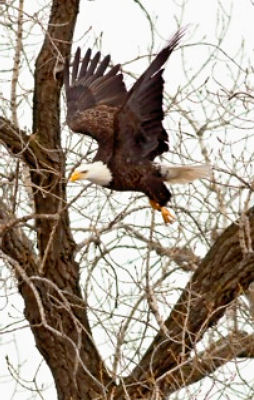

The Fox-Wisconsin Heritage Parkway (FWHP) will be a non-continuous parkway with the purpose of highlighting and enhancing the unique heritage of the State of Wisconsin by exemplifying and promoting the cultural, historical, recreational and natural resources of this river corridor. The planned lineal parkway will complement numerous other scattered multi-purpose parks, historic sites, tourist attractions and wildlife areas creating a single system of sites.
The boundaries follow the Marquette and Joliet route of discovery and incorporate the Lower Fox, the Upper Fox, and the Lower Wisconsin rivers. Establishing the Heritage Parkway will tie the current landscape with the history which brought us to it and allows for that history to come alive. It will allow residents and visitors to roam the area by power boat, canoe or kayak along the water trail, by foot or wheel along the many walking and biking trails, or by car on a driving tour. As they roam they will encounter pieces of the many stories that have occurred here.
Whether Native American, early European settler, or the manufacturing industries which helped us prosper, we all have the river in common. Therefore, each of our stories is the same story and to tell them, to keep them alive, to enhance the pride we already feel in our home – that is what the Parkway is all about.
Heritage Parkway Focus Areas
- History
- Health and Recreation
- Increased Public Access
- Environmental Stewardship
When early explorers paddled up the Fox River in hope of finding the fabled “Route to the Orient” they could not have imagined the myriad opportunities that would be unleashed by their travels. Today, we can see that their historic journey on the Fox and Wisconsin Rivers ultimately led to the opening of the Northwest Territory, and a great expansion of our nation. The Fox River Valley and the Lower Wisconsin waterway share a singular distinction in having played a unique role in shaping our nation’s growth and forming our nation’s history.
Proposal Background
The original Fox River Heritage State Parkway Concept Plan was conceived of over a decade ago to acknowledge, and promote an appreciation for this route of exploration, and its contribution to our State and National heritage. This plan evolved from the vision of persons such as Assembly Speaker David Prosser, who is today, a Wisconsin Supreme Court Justice; and numerous civic leaders and organizations, most notably including Bill Kellet, Val Wiley and the Fox Cities Convention and Visitor Bureau Board, John Foster and the Board of the Friends of the Fox organization, and many others. The East Central Wisconsin Regional Planning Commission (ECWRPC) took up the challenge and drafted the original concept plan published in 1997. These organizations and the East Central Wis. RPC remained a mainstay of the effort, and worked closely with area communities and our State and Federal congressional delegations in both parties, to prepare the agreements and secure the transfer of the federal lock properties to the State of Wisconsin.
The transfer of ownership for the 17 Lower Fox lock sites took place in September of 2004. In the year that followed ECWRPC facilitated the creation and organization of the Fox River Navigation System Authority as prescribed in the Wisconsin legislation. With the transfer from Federal to State hands, a check for $11.83 Million dollars was received by the Governor on behalf of the Authority. That money is now invested and managed by three Community Foundations in our region. In 2006 the Authority began work on the Phase I lock restoration work, which involves completion of the Appleton Locks 1-4 projects by December of 2006. A decade after the original plan was published, the vision remains as important as ever, but much has evolved and changed and the decade old plan needs to be updated to reflect the current status of property disposition, and the new plans and visions of the many adjoining communities.
With the acquisition of the Corps of Engineers lock properties on the lower Fox River, the destiny of the FWHP lies in the hands of those who will make it reality. Friends of the Fox and East Central RPC are currently working toward that reality. An executive committee started meeting monthly in June of 2008 and determined that the next step is to submit an application to the National Park Service for National Heritage Area status. This application must take the form of a feasibility study and will be completed and ready to submit by mid June of 2009. Please consult the Parkway Update E-Newsletter (see above) for current status.

Fox-Wisconsin National Heritage Area
Interpretive Themes
Theme #1
Native Peoples and the Trail of the Serpent
(Peopling Places)
Summary of Theme
The Fox-Wisconsin River corridor shows evidence of Indian life reaching as far back as 9,000 BCE, with a rich history in the past 300 years. These native peoples heavily utilized the river, fishing, gathering wild rice, hunting, and located their camps and villages along the waters’ edge. Eventually, the region became home to the Menominee and Ho-Chunk tribes. With an estimated population of 20,000, these native peoples were the first to greet the Europeans when they arrived in the 1600s. From the 1600s to 1800s, the Sauk, Miami, Potawatomi, Fox, Kickapoo, Mascouten, and Oneida came to the area after being displaced by whites and forced by wars. These tribes contributed much to the early culture and exploration of the area, and their technology, traditions, folklore remain evident in the landscape. Of all the inhabitants of the Fox-Wisconsin corridor, the native peoples of this land, both past and present, have the longest and deepest connection to this place.
American Indians and the Water
- Traditional Native stories – Trail of the Serpent, creation stories
- Menominee and Ho-Chunk – 2 tribes located along water when written history began; describe customs, beliefs of tribes; spear fishing, wild rice gathering
- Places of tribal importance along corridor – effigy mounds, historic sites, tribal boundaries
Intertribal Relations
- Iroquois Wars, bringing Fox, Sauk, Mascouten, Potawatomi, Kickapoo, Miami, and Ottawa
- Religious/cultural revival – Midewiwin Society
- New York Indians – Oneida and Stockbridge
Relationship with Early Europeans and the United States
- Fur Trade – relationship with traders, explorers, role, Metis, missionaries
- Dislocation, treaties -1825, 1827, 1829, 1832, 1833, 1836
- Involvement in French and Indian War, War of 1812, Black Hawk War, Red Bird Uprising
- White settlement, reservations
Wisconsin Tribes Today
- Nine federally recognized tribes in WI: Oneida, Stockbridge-Munsee, Menominee, Ho-Chunk, Potawatomi, Dakota, Sauk, Fox, and Ojibwe (7 reservations)
- Cultural preservation – immersion schools, effigy mounds, powwows, cultural centers
Theme #2
Route of Discovery – Marquette and Joliet
(Changing the Role of the United State in the World Community)
Summary of Theme
For 150 years, Wisconsin was under the control of the French as part of New France. It was during this time, from the early 1600s to 1760, that the first white men entered this part of North America. Coming to explore, exploit, and prophesize, these men had a lasting impact on the history, culture, and landscape of the Fox-Wisconsin corridor. Two of these explorers were Louis Joliet and Jacques Marquette, commissioned by the governor of New France to find a route to the Northwest Passage. In 1673, the pair were the first explorers to navigate the entire length of the Fox and Wisconsin Rivers. Their travels, along with those of Nicolet, Allouez, Radisson, and others, paved the way for further development of the American West. The boundaries of the Fox-Wisconsin Heritage Parkway follow their momentous journey, from Green Bay to the Mississippi River.
New France
- Claiming and the coming of Jean Nicolet 1634 (first white explorer to Wisconsin)
- Accounts of early explorers/missionaries: Nicolet, Radisson, Perrot, Joliet, Marquette, Duluth, Tonty, Louvigny, Lingery, and Langlande
- Relations with Britain; French and Indian War
- French impact on settling of North America; French impact on landscape of Wisconsin
Marquette and Joliet
- Journey from Green Bay to Mississippi River, 1673?events, sites of interest
- Opened up further exploration of Wisconsin and the West; discovery of the route to Mississippi
The Fur Trade
- First industry of Wisconsin?brought the first settlers to region
- System of fur trade
- Coureur des bois/Indian relations – metis culture
Theme #3
Waves of Immigration
(Peopling Places)
Summary of Theme
In the 1800s, the frontier continued to move west, bringing American settlers and European immigrants to help settle and develop Wisconsin, particularly areas of the Fox and Wisconsin Rivers for much of the remaining century. The new settlers joined the American Indians and French populations, bringing with them a new entrepreneurial spirit. These new settlers came in distinct waves throughout the 18 and early 1900s, seeking wealth, freedom, and family along the shores of Wisconsin’s rivers, making Wisconsin one of the most rapidly growing regions in the country. Their settlement had a profound influence on the character of the state, and had a lasting impact on the rivers, forever changing their nature and purpose.
Draw of the Land (1830s-1840s)
- Westward expansion and opening up of land by treaties and war
- Yankees, Cornish, Southerners come to SW Wisconsin to mine/farm
- Precursors to settlement – opening of land offices, clearing of land by logging
- Coming of English, Scottish, Irish, Germanic and Scandinavian to farm and log
Developing Commerce and Culture (1850s-1861)
- Settlement reaches Fox-Wisconsin corridor – physical/cultural barrier
- Pull of industry – Railroads, water, power sources
- More Germans and Scandinavians – settlement patterns, culture
“Cultural Mosaic” (1870s-1920)
- Largest boom – creates “filling up process;” peopling of urban centers; no part of corridor has exclusive dominant group
- N and E Europeans – settlement patterns, culture, push and pull factors
Theme #4
The Hardest Working River Highway
(Transforming the Environment/Expanding Science and Technology)
Summary of Theme
In the 1800s, the American frontier continued to push westward, bringing settlers to the banks of the Wisconsin and Fox Rivers. At that time, most travelers and goods came by way of the Mississippi, making a long and expensive journey around the country. However, with the arrival of steamships and the success of eastern canal systems, particularly the Erie Canal in 1825, early planners saw the potential to develop the corridor as a water highway system. Situated between two of the most navigable water routes in the country, the Fox and Wisconsin Rivers would be a direct link between the Great Lakes and the Mississippi, making the state an important commercial center and stopping place along the water route through the continent. Thus, the state and private companies embarked on a thirty year quest – to create the first industrial water highway of canals, locks, and dams. Not only would this route save time and money, early investors believe this system had the potential to revolutionize travel throughout the bourgeoning nation. While their plans did not quite come to fruition, this system remains today, a symbol of a transformed environment. In an effort of revitalization, this water system continues to be an important part of our young nation’s quest for prosperity and demonstrates the spirit of ingenuity.
Corridor Geography
- Rivers and landscape features formed by glaciations
- Geography of the Wisconsin River/Driftless Area, Portage/ Central Plane, Fox/Easter Ridges and Uplands
- Topography and it’s relation to industry – dams, transportation
Fox-Wisconsin Improvement Project
- Portage Canal history?connecting the west; potential for an industrial center
- Development of slack water system, 1838-1853
- Fox-Wisconsin Improvement Company, 1853
- U.S. Army Corps, 1870s
Hydro Power
- World’s fist hydropower project in Appleton, 1882
- 13 dams along Fox River
River System Efforts Today
- Restoring the Wisconsin River
- Replacing, refurbishing locks along Fox River and Portage
- Efforts to control invasive species, rebounding of native wildlife, recreation and trail systems
Theme #5
Industry of Abundance
(Developing the American Economy)
Summary of Theme
Since the coming of the first white settlers, industry has played an important role in shaping the landscape of the Fox and Wisconsin River corridor. Likewise, the rivers have had a significant impact on the industry of the region. Its position as a linkage between two of the United States’ greatest water routes, its abundance of natural resources, and potential for power made this region a goldmine for potential investors, willing to take a gamble in the Wisconsin frontier. Thus, industries began to develop along the water route: mining, agriculture, logging, textiles, milling, all taking advantage the corridor’s natural abundance. While some industries rose and fell with changing technology, others, such as the paper industry, made this region a production leader world-wide.
Frontier Industries: Mining & Quarrying
- 1820s-1840s, lead mining in SW Wisconsin
- Early mining communities?Helena, Savanna City
- 1800s-1920s, quarrying limestone along lower Fox and Wisconsin and granite along upper Fox
Agriculture: From Wheat to Dairy
- Wheat farming develops in S part of state from 1840s-1880s – helped to bring first large groups of settlers
- Diary and cheesemaking – begin 1870s, popularity, profitability, technology, geography
- Wisconsin’s longtime link to dairying – “America’s Dairyland,” situation of dairy farms today
Logging and Papermaking
- Logging, 1830s-1900 – brought settlers, establish urban networks, lay foundation for paper industry
- Papermaking along lower and upper Fox – companies at Neenah, Green Bay, Oshkosh
- Papermaking industry today
- Paper related industries: furniture, cooperage, carriage, housewares
Theme #6
Currents of Conservation: Theory and Practice
(Creating Social Institutions)
Summary of Theme
As the Fox-Wisconsin River corridor continued to develop throughout the mid to late nineteenth century, a concern of the natural world also began to emerge among newly urbanized Americans. These citizens saw the frontier landscape as an important spiritual and aesthetic resource, to be protected from the destruction of industrialization. On the fringe of the advancing frontier, Wisconsin became a forum for conservationist thought. Throughout the movement, the Wisconsin and Fox River corridor was a source of inspiration and dispute for early environmentalists. It was on the banks of these rivers that John Muir began his work, Aldo Leopold wrote his essays, and Increase Lapham pushed forward his ideas of settlement and industry. As the region developed, the conservation movement had a tremendous impact on the relationship between the rivers and industry. The effort, to balance human uses while protecting the natural world, continues today.
Leaders in Conservation
- Increase Lapham – leader of Wisconsin conservation movement, 1850s, deforestation
- John Muir – lives on Fox River, father of the NPS, preservationist
- Progressivism/Robert M. La Follette – “Wisconsin Idea,” Charles Van Hise
- Aldo Leopold – conservationist, “land ethic,” A Sand County Almanac
Industry and Conservation
- Logging industry, deforestation, Increase Lapham
- Government policy, Progressivism
- Paper Industry – PCBs, cleanup
- Lock and Dam removal, controversy
Conservation Today
- Lower Wisconsin State Riverway
- Total Maximum Daily Load
- Increase parks and recreation; local groups
Establishing the Heritage Parkway will tie the current landscape with the history which brought us to it and allows for that history to come alive.

history of the heritage parkway trail
1634– Fox River discovered by Nicolet, an emissary of the governor of New France. The first white man to set foot in Wisconsin.
1671– lst fur trading post (Jesuit mission of St.Francis Xavier) at the present DePere Dam site.
1634– First Portage between Fox and Wisconsin rivers. (Raddisson and Goselliers)
1715– French established military fort Fort Mackinac and Fort La Baye in Green Bay 1717.
1763– British took over Fort Las Baye, rebuilt and renamed Fort Edward Augustus.
1673– French Jesuit priest Jacques Marquette and Canadian born Louis Joliet explorers travel from Green Bay to Mississippi River and beyond.
After war of 1812, Americans came. Fort Howard at Green Bay was garrisoned with American troops in 1816.
1836– Treaty of the Cedars, Menominees ceded 4 million acres of their land including lands along the lower Fox to the United States (near Little Chute).
1837– Michigan became a state, and the Wisconsin Territory was established.
1840– Topographical Engineers, under the leadership of Capt. Thomas J. Crum, completed a study of the Fox/Wisconsin rivers, recommending the construction of dams, canals, locks, and other improvements on the lower Fox.
1846– Federal land grant for Fox River Improvement Project for waterway improvements.
1847– Lawrence University chartered.
1848– Wisconsin becomes a state, Governor Nelson Dewey proposes connecting the Great Lakes to the Mississippi River via the Fox/Wisconsin rivers.
1849– Wisconsin legislature set up a Board of Public Works to complete this project. The Neenah dam was completed.
1848– DePere dam and lock was finished.
1850– Morgan L. Martin proposed to complete the improvements at Little Chute and Grand Kaukauna.
1852– Lock and dam access canal completed in Menasha (3 foot channel, Lower Fox).
July 6, 1853– Governor Farwell signed a bill incorporating the Fox and Wisconsin Improvement Company. This company led by Morgan L. Martin received the lands, works, tolls, and water- power rights, agreeing to complete the waterway in three years. During this time, because of difficulty in raising money through a bond issue, some New York financiers led by Horatio Seymour and Erastes Corning put up the necessary funds and assumed control of the company.
1856– First Complete transit of complete system by steamboat Aquila.
1866– Green Bay and Mississippi Canal Company was formed and the Federal government extended the land grants, which were due to expire in 1866.
September 18, 1872– Waterway including locks and dams (excluding water rights and dam at Kimberly) was sold to U.S. Government with title transfer.
1882– First Hydroelectric power plant in the world, generated power for the Vulcan Paper Mill and the home of its owner, HJ Rogers-Appleton (Hearthstone).
1872-1884– U.S. Army Corps of Engineers completed the project.
After massive flood in 1881, Corps determined “ordinary high water level” for Lake Winnebago to prevent future flooding.
1887– Federal government abandoned improvements on the Wisconsin River.
1921– U.S. Corps recommended abandonment of the Upper Fox River Locks.
1952s– Last barge traffic, except for movement of paper dryers and construction equipment.
1951– U.S. Corps closed navigation on the Upper Fox River, abandoned the system and transferred ownership to State of Wisconsin in 1952.
March 1982– Corps announces intent to place Lower Fox River Locks in caretaker status with the navigational system to close on October 1, 1982 with no future operations planned. Water levels would continue to be a Corps responsibility. First public meeting with Corps held at the Appleton Yacht Club on March 7, 1982- sponsored by Boater’s Rights Committee of Yacht Club.
1982– Fox River Locks Task Force created by Governor Dreyfus and chaired by Appleton Mayor Dorothy Johnson submitted their report to the Governor on December 1, 1982.
Congressmen Toby Roth and Tom Petri secured funding for continue locks operation for the years 1983 and 1984.
April 1984– East Central Regional Planning Commission issues assessment of present and future economic impacts of the Lower Fox River Locks navigational system.
March 28, 1985- Friends of the Fox, Inc. is officially incorporated.
1985– Fox River Management Commission was created, and operated 17 locks on Lower Fox River until the end of the 1987 navigational season.
June 26, 1986– Friends of the Fox sponsors boat-tour of the Lower Fox River Locks from Kaukauna to Appleton for regional tourism directors and local news media.
May 16, 1987– Friends of the Fox sponsors opening ceremonies of the Fox River Waterway in dedication of the new marina in downtown Menasha, including a boat tour by Governor Thompson and Secretaries of Dept. of Development and Administration.
Sea Lamprey hearings were held in 1987, decision was made to close the Rapide Crouche lock. East Central Wisconsin Regional Planning Commission prepared a short term plan for Lower Fox River Locks operation, including the temporary sealing of the lock at Rapide Crouche.
1988– Fox River Management Commission begins 3 lock operations, including DePere, Little Kaukauna and Menasha locks, for recreational boating, along with occasional openings of other locks to facilitate commercial traffic.
1988– Congressmen Toby Roth and Tom Petri suggest two alternatives to the State of Wisconsin-
1st. $5 million of federal money to help repair locks, Corps to operate dams only until 1992, and then entire system is turned over to state.
2nd. Re-designate system from commercial to recreational and flood control, requiring state and local cost share of all federal costs.
June 27, 1988- State of Wisconsin rejects both options.
August 23, 1988– Public meeting sponsored by Friends of the Fox at Oshkosh Convention Center with congressional and Corps representatives to answer questions from the public.
April 11, 1989– Public meeting sponsored by Friends of the Fox at Appleton’s Paper Valley Convention Center, featured state representative David Prosser Jr..
April 25, 1989– Meeting of industrial leaders sponsored by Friends of the Fox at Appleton’s Paper Valley Convention Center.
1989– Legislation by the State of Wisconsin Legislature provides funding and direction to determine levels of contaminants and dredging needs in the harbors and navigation channels of the Lower Fox River.
April 1989– Lower Fox River/Winnebago Pool Long Term Plan released by East Central Regional Planning Commission.
April 26, 1990– Public meeting sponsored by Friends of the Fox at the Oshkosh Convention Center features Bruce Hagen (representing Governor Thompson), Bill Selbig (representing Wisconsin Department of Natural Resources), Dennis Hultgren (representing paper industry), Bill Welch (representing Fox Cities Chamber of Commerce), and Carol Buettner (representing theFox Valley state legislative caucus). Meeting also included an update on the Zebra Mussel threat to the waterway.
1990– Wisconsin Department of Natural Resources issued report of U.S. Army Corps analysis of sediment testing along with the Department’s confirmation of the Corps conclusions that “The sediments found in the navigation channels in the Lower Fox River are considered heavily polluted, but not hazardous under existing guidelines.”
Fall of 1990– Wisconsin Tissue Mills. brought to Menasha by barge a Yankee style paper dryer through the Lower Fox River Locks System after off loading from a freighter at Green Bay to facilitate a paper mill expansion.
1990– Senators Bob Kasten and Herb Kohl introduce Legislation to designate the Fox River as a National Historic Corridor.
1990– Federal legislation allows resumption of user fees after one year of disallowing because of old legal rules.
January 22, 1991– Friends of the Fox arranges meeting with Congressman Toby Roth acting as host, of federal delegation (Toby Roth, Tom Petri, Robert Kasten and Herb Kohl) to develop three point plan:
- Obtain State of Wisconsin plan to assure future operation of system.
- Seek federal finding for restoring lock system.
- Pursue enactment of National Heritage Corridor designation.
March 1991– Draft Interim Disposition Report is released by Corps, indicating a rationale for justifying a continuing role for the Corps in water level management. Fox/Wisconsin rivers named as one of four tourism pilot projects in Wisconsin by National Trust for Historic Preservation. Heritage task force formed with Fox Cities Visitor and Convention Bureau director Val Wylie named as chairperson.
October 12, 1991– First annual Fox Cities Marathon named “Bridging the Fox”.
July 1992– Friends of the Fox arranges meeting with Congressman Tom Petri acting as host, of federal delegation (Tom Petri, Toby Roth, Bob Kasten and Herb Kohl) and Pat Osbourn (lead negotiator for the State of Wisconsin). Meeting goal was to move negotiations from Corps level to Undersecretary of Army office in Washington D.C..
October 1992– Referendums in Outagamie and Calumet counties, asking if property tax dollars should be used to fund the Fox Locks. Negative votes stalled the negotiations between the state and federal governments.
February 1993– Fox River Corridor Economic Development Feasibility Study by LDR International, Inc. is submitted to East Central Wisconsin Regional Planning Commission. The seed money for this study was provided by the Friends of the Fox.
March 19, 1993– Fox Locks/Navigational meeting at Outagamie County courthouse. Meeting was called by Wisconsin Governor Tommy Thompson in attempt to get direction from representatives of area municipalities for future negotiations. Consensus was reached that Corps closure was unacceptable. Not enough local commitment was offered for restoration for the locks.
August 1993– Outagamie County Executive, Ron Vandehey and Fox Cities Chamber Executive, Bill Welch form Fox Locks Closure Committee, hoping to minimize negative effects of locks proposed closure as outlined in Corps Draft Disposition Report.
November 15, 1993– Public meeting at Appleton’s Paper Valley Convention Center. State Representative David Prosser, Jr. suggests Fox River Heritage State Park as possible future solution to future of system.
December 23, 1993– Letter from acting Assistant Undersecretary of Army, Dr Dickey to Pat Osbourn (lead negotiator for State of Wisconsin) indicated that negotiations are nonexistent, and the Corps will move it’s deauthorization study forward with the following timetable,
- December 1993-April 1994– Corps will attempt to coordinate with local municipalities.
- November 1994– Environmental Impact Study for public review.
- November 1996– Final Disposition Report to Congress.
March 7, 1994– Friends of the Fox sponsors public meeting at St. Norbert College in DePere, Wisconsin. State Representative David Prosser, Jr. reintroduces State Heritage Parkway concept.
March 8, 1994– Fox River Corridor named to ten most endangered list of historic sites in Wisconsin by State Historic Trust.
June 1994– Draft report of Fox Locks Closure Study presented to closure committee by Mead and Hunt engineering firm, with intent of reporting to public approximately mid-August 1994.
August 17, 1994– Fox Locks Closure Committee reports to area municipalities, indicating their choice of closure, creating a series of “cascading dams” in place of the locks.
August 24, 1994– Fox/Wisconsin Heritage Corridor, Inc. (a non-profit organization) assumes responsibility for a pilot project, promoting heritage tourism along the Fox and Lower Wisconsin rivers.
September 19, 1994– Fox Locks Closure Committee meets with area municipalities to reach a consensus for future direction. Several participants called for additional study (with state participation) of operational comparisons to the closure alternatives. After discussion, Chairman Ron Van de Hey asked that each municipality get a letter to him indicating their interest. A deadline of mid-November was set for that response.
November 10, 1994– Friends of the Fox sponsors a public meeting at Neenah’s Valley Inn. State Assembly Speaker David Prosser, Jr. reiterates his enthusiasm for a State Heritage Parkway as the state/local solution to the future of the Fox River navigational system to the approximately 300 people in attendance.
January 25, 1995– Oshkosh Chamber of Commerce and Winnebago County announce the formation of a regional task force to initiate a continuation of the Meade and Hunt study to include costs of an operating locks system.
January 1995– Appleton city council passes resolution in support of Assembly Speaker Prosser’s State Heritage Park Plan and asks governor to reopen negotiations with the Corps of Engineers.
February 1995– Villages of Little Chute and Kimberly pass identical resolutions to Appleton in support of Prosser’s State Heritage Parkway Plan.
February 2, 1995– Winnebago County Executive, Jack Steinhilber wrote the Governor asking for the appointment of a Fox River Heritage State Park Committee, on behalf of the newly formed Fox Locks Task Force Committee.
March 7, 1995– Winnebago County Board Chairman, Joseph Maehl wrote the Wisconsin Department of Natural Resources Board asking WDNR to explore the creation of a Fox River Heritage State Parkway.
March 16, 1995– Governor Tommy Thompson wrote the WDNR Board asking for a study of the Fox River Heritage Parkway concept.
March 18, 1995– John Casper, representing the Oshkosh Chamber of Commerce signed an authorization for field inspections of the Lower Fox River Locks, beginning the Meade and Hunt Locks Operation and Rehabilitation Costs Study.
March 24, 1995– Wisconsin DNR announces study of the Fox River Heritage State Parkway concept.
August 4, 1995– U.S. Corps releases Preliminary Draft Disposition Report to county executives asking for comments prior to September 6, 1995.
August 18, 1995– Fox Locks Rehabilitation Study group led by Oshkosh Chamber of Commerce met to discuss draft of Meade and Hunt rehab report.
February 16, 1996– Negotiations re-open between State of Wisconsin and Corps of Engineers, led by George Meyer, secretary of WDNR.
April 12, 1966– Local news media reports on Lac du Flambeau Band of Chipppewa Native Americans interest in obtaining the U.S. Corps project office in Kaukauna. Corps followed up with promise in May to assure that none of the federal properties will be sold or disposed of, before an agreement with the state relative to a transfer of the system is reached.
June 1996– Corps of Engineers announces that stop logs will be installed at Appleton locks #1 and #4, and at the Cedars locks to protect the integrity of these pools. In November 1966, stops logs were installed at Appleton lock #2 as well.
October 18, 1996– WDNR Secretary George Meyer hosted a meeting with county executives from Brown, Outagamie and Winnebago counties along with representatives from the State Department of Tourism, State Historical Society, East Central Regional Planning Commission, Friends of the Fox, Colonel Haid and a delegation from the U.S. Army Corps of Engineers. This meeting identified concerns and issues from state, local, federal and historical perspectives, naming a technical work group to identify and update cost/benefit update information to be used in further negotiations.
November 13, 1996– Fox River Negotiations Study Group meets to review and update cost figures from various previous studies.
November 26, 1996– Fox River Negotiations Study Group meets to review and update benefits from various previous studies.
February 4, 1997– President Clinton announces in his State of the Union Address, that he will designate 10 American Heritage Rivers by year-end. In the limited initial criteria, the Fox River appears to be a perfect fit.
February 12, 1997– The Fox River Coalition, consisting of Wisconsin Department of Natural Resources and representatives of regional municipalities and industry, met and announced a partial settlement of claims against local industry of $10 million to begin clean up efforts on the Lower Fox River.
March 19, 1997– Appleton Mayor Tim Hanna convenes a meeting of community leaders to form Fox River Forward group to introduce the American Heritage Rivers Initiative to the area.
April 22, 1997– U.S. Army Corps of Engineers notifies WDNR Secretary George Meyer that they have raised the possible dollars available with a transfer of the navigational system to $13.7 million.
April 28, 1997– Representatives from Fox River Forward attend a forum on American Heritage Rivers Initiative in Chicago.
June 1997– WDNR Secretary George Meyer calls for a meeting of county executives, city mayors and village presidents from along the Fox River to make a decision on their vision for the future of the Fox River System. He sets a deadline of September 1997 to report back to the Governor, after which the negotiations can move forward.
June 19, 1997– EPA announces that it is adding the Lower Fox River to the Superfund List to force cleanup action.
July 14, 1997– Fox River Forward tours the Fox River from Green Bay to Menasha with representatives of U.S. Department of Agriculture, EPA, and Karen Hobbs (Council on Environmental Quality), for the entire day, highlighting the qualities, benefits and challenges of the Fox River System. The Vulcan Street Hydroelectric Station (world’s first hydroelectric plant) is inducted into the Hydro Hall of Fame.
June 26, July 14, August 26 and September 30, 1997– Representatives of counties, municipalities, State Historical Society, Wisconsin Department of Transportation, Fox River Management Commission and Wisconsin Department of Natural Resources meet to determine objectives and local vision for report to the governor with direction for continued negotiation with the U. S. Army Corps of Engineers.
October 1997– Design work begins for test clean up at Deposit N in Little Chute of PCBs.
2007– East Central Regional Planning Commission prepares “Fox River State Heritage Parkway Concept Plan”
November 19, 1997– Friends of the Fox sponsors public meeting at Appleton’s Paper Valley Convention Center to update the public on negotiations and the American Heritage River’s Initiative.
November 20, 1997– WDNR Secretary George Meyer meets with Wisconsin Department of Administration Secretary Mark Bugher, Appleton Mayor Tim Hanna, Kaukauna Mayor John Lambie, Little Chute Administrator Russ VanGompel, staff of Wisconsin Governor Tommy Thompson and John Forster (Friends of the Fox). Secretary Meyer received authorization to continue negotiations with the Corps.
April 1998– Friends of the Fox approved the use of their property at Little Chute to be used as a staging area for the river clean up test at deposit N. Corps issues a “new” Final Dispositon Report for the Lower Fox River navigational system. This test project continued until winter freeze-up.
April 25-28, 1998– Connie Ludwig represented the Friends of the Fox and Brian Casey represented Fox River Forward at the Chicago Heritage Rally, touring the Illinois and Michigan Canal Corridor.
May 1, 1998– Dick Abb and John Forster represented the Friends of the Fox at the Wisconsin Academy of Sciences Annual Conference in DePere, focusing on the Fox/Wolf waterways.
June 14-July12, 1998– WDNR sponsors Fox-Wisconsin Heritage Corridor Canoe Trip. Gary and Connie Ludwig represented the Friends of the Fox for part of the trip. Governor Thompson participated in a portion of the trip.
June 1998- Congressman Johnson helps secure additional funding for interim repairs to lock system ($660,000). Announcement is made that Wisconsin’s Fox River wasn’t named an American Heritage River.
October 4, 1998– The Appleton Post Crescent produced an 80 page special section on the issues facing the Fox River.
October 1998– Winnebago County Executive Jane Van de Hey begins an effort to join the Community Foundations from the Green Bay, Fox Cities and Oshkosh areas in an effort to reach the local dollar share for the region without using tax dollars.
December 1, 1998– The Friends of the Fox provided seed money to provide for the Fox Cities Greenways group to produce a promotional package to move the proposed Railroad Trestle-hiking and biking trail connection across Little Lake Butte des Morts to reality.
Spring 1999– Dredging is completed at deposit N. Deposits N and O 8500 cubic yards of contaminated sediment was removed.
June 25,1999– A steering committee for the Community Cost Share Fund Raising met consisting of Harlan Kiesow, Eileen Connolly-Keesler, Appleton Mayor Tim Hanna, Larry Kath, Winnebago County Exec. Jane Van de Hey, Chuck Lamine, John Fink, Jack Nelson, George Mueller and John Forster. In subsequent months, Bob Bero (former CEO of Menasha Corp) agreed to lead this fund raising effort.
August 1999– Kimberly-Clark donates its Atlas Mill (on the Fox River) as the future home of the Paper Industry International Hall of Fame. Fox River Group of paper companies begins dredging of contaminated river sediments near the De Pere dam in Green Bay.
January 4, 2000– At a meeting in the governor’s office at Madison, Franc Fennesy and Ron Fassbender of WDNR, Bob Bero, Harlan Kiesow, John Forster and Senator Carol Roessler met with Governor Thompson and his staff member Jeff Schoepke to outline local funding and resolve questions from the Trailblazer group and from the governor’s office..
January 7, 2000– Trailblazer Committee met with both senators and representatives from the legislative districts from Lake Winnebago to Green Bay to discuss finalizing state support and necessary legislation for the project.
February 4, 2000– Governor Thompson writes Dr. Westphal (Asst. Secretary for Civil Works-Corps) indicating that all major issues and a funding formula have been resolved and requested that a MOU be signed in the near future. He also requested that the Fox River Navigation System transfer be included in the 2000 Water Resources Development Act.
September 11, 2000– Governor Tommy Thompson, Dr. Westphal (Asst. Undersecretary for Civil Works, U.S. Army Corps of Engineers) and WDNR Secretary George Meyer sign an historic transfer agreement, beginning the process of creating the Fox River State Heritage Parkway
March 9, 2001– Following a meeting with governmental leaders and Fox Valley citizens, a bi-partisan group of legislators pledged support for Governor McCallum’s proposed Fox River Navigational System Authority. The group consisted of Republicans Sen. Carol Roessler, Sen. Michael Ellis, Rep. Dean Kaufert, Rep. Steve Wieckert, Rep. Terri McCormick and Democrats Sen. Dave Hansen and Rep. Lee Meyerhofer.
April 21, 2001- 2002 budget submitted by President Bush includes no federal money for the transfer of the navigational system to the State of Wisconsin.
May 30, 2001– The Wisconsin Joint Finance Committee unanimously approves Fox River Authority language in state budget.
Summer 2001-First Annual Park to Park Paddle event was launched
June 29, 2001– U.S. House of Representatives restores to the federal budget process $5 million of the federal dollars necessary for the federal/state transfer
June 11, 2001– A unified community approach was unveiled that focuses on possible recreational enhancements along and near the Fox River, an effort led by Appleton Alderperson. Jo Egelhoff and Grand Chute Chairman Michael Marsden.
September 2001– Governor Scott McCallum signs state budget including state share of transfer funding and creation of Fox River Authority.
September 17, 2004– Governor Doyle signs transfer documents for transfer of Fox River Navigational System to State of Wisconsin at ceremony at Jay’s Restaurant on the Fox River in Appleton. A ceremonial check of $11,875,000 was presented to the area community foundations from the federal government.
Fall 2004– Dredging begins in Little Lake Butte des Morts and is expected to continue until 2009
August 27, 2005– Dedication of Trestle Trail and Bridge at the Menasha lock.
April 12, 2006– Consent degree signed by NCR Corp. and Sonoco-US Mills Inc. in U.S. District Court in Milwaukee to remove approximately 120,000 cubic yards of PCB contaminated sediment from one of the hotspots on the Fox River downstream and west of the De Pere dam.
2006– Appleton locks 1-4 rebuilt, Lawe Street Bridge and Appleton CN Railroad bridge rebuilt
2007– PCB clean up begins below De Pere dam, East Central Regional Planning Commission begins rewriting and updating the 1977 Fox River State Heritage Parkway Concept Plan.
May 12-18, 2007– Menasha lock closed temporarily because of VHS threat by WDNR
May 19, 2007– Rededication of Appleton’s #1 – #4 locks after rehabilitation.
2008– Little Chute Guard Lock, Cedars lock and Little Chute dike, Combined Locks rebuilt.
2009– Fox-Wisconsin Heritage Parkway Steering Committee and Executive Committee were formed. Bylaws were created and preparation began to apply for 501c(3) tax status. The committee prepared a feasibility study to apply to the National Park Service for National Parkway designation. A Fox-Wisconsin Heritage Parkway Board was created and in June 2009 the committee presented the feasibility study to the Wisconsin Congressional Delegation.
February 10, 2010– Application for 501c(3) tax status was made and on May 4, 2010 IRS 501c(3) tax exemption status was approved for Fox-Wisconsin Heritage Parkway, Inc.
Summer 2010-Journey of Rediscovery including a series of 13 canoe and kayak trips over 9 weekends, beginning in Portage on April 24th, traveling 190 miles to Green Bay. This journey included the 9th annual Neenah to Appleton Park to Paddle event.
2010-Legislation was prepared by federal delegation to complete the process of creating federal designation of the Parkway. On July 30, 2010 Senator Herb Kohl and Congressman Steve Kagen introduced legislation.
October 15, 2010-First meeting of the complete board of directors of Fox-Wisconsin Heritage Parkway after restructuring to meet the criteria outlined in the redefined bylaws.
